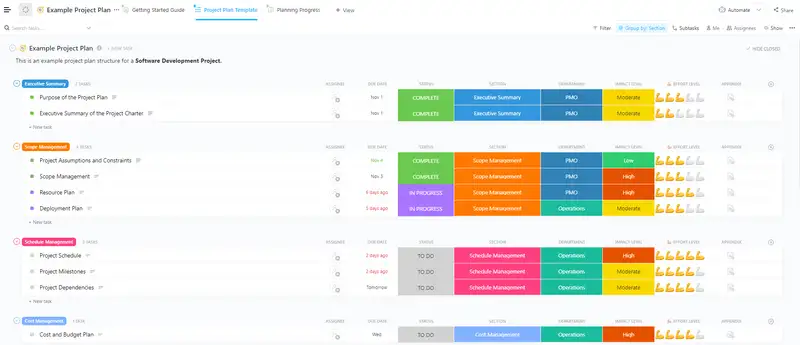

With the help of this practical Data Warehouse Project Plan Template, you can efficiently handle your tasks and set up an effective data warehouse procedure.
Creating a data warehouse project plan can be overwhelming, but it doesn't have to be. By breaking down the task into smaller steps and using the project plan template in ClickUp, you can take control of your data warehouse project and ensure it is successful.
Start by researching and defining the scope of the project to make sure that you are aware of any possible issues or risks before beginning work on it. This will help you better plan for resources and timeline for completion. Use a Doc in ClickUp to list out research points, such as desired outcomes, risks or other factors that could affect progress of the project.
Now that you have an idea of what is required, it's time to start gathering the necessary resources to get your project off the ground. This includes people, software/tools, technology infrastructure, etc. List out all resources needed in a task in ClickUp so nothing is overlooked during your planning phase.
Create specific goals and objectives for each phase of your project that are measurable, attainable and actionable. This will provide clarity and direction throughout the entire process so everyone stays on track towards completion of their tasks. Create subtasks in ClickUp with assignees responsible for working towards meeting each milestone objective within their respective timeline(s).
Map out realistic timelines for when each phase, task or subtask should be completed by setting due dates accordingly in ClickUp tasks card view—so you can easily visualize overall deadlines at a glance! Create recurring tasks in ClickUp to simplify workload management if any part of your data warehouse requires regular maintenance or updates after implementation has been finalized.
Consider potential risks (including technological ones) involved with your data warehouse project beforehand so that if any issues arise during implementation—you already have a plan prepared! For example: Documenting backup & recovery plans ahead of time could be extremely beneficial & helpful if something were to go wrong during implementation. Create recurring tasks in ClickUp with reminders & assignees responsible for monitoring & managing any potential risks at designated intervals throughout your data warehouse’s lifecycle.
Before beginning work on any aspect of your data warehouse—it’s important to get an accurate estimate on how much it would cost to implement various technologies & tools based on research gathered. Use custom fields & calculations within ClickUp tasks cards view to total up costs associated with each component’s individual expenses & allocate budget accordingly!